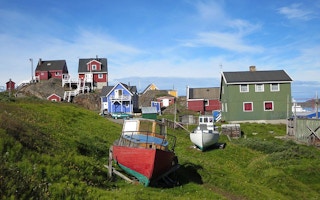Scientists from the US, France and China say they have detected “the first clear evidence of a discernible human fingerprint” on the vegetation of the entire northern hemisphere.
They say that at least half the planet is leafier, greener, more covered in grasses, wildflowers, mosses, and forest canopy than it was half a century ago – and that this would not have happened without human activity.
The scientists report in Nature journal that their “observed greening record is consistent with an assumption of anthropogenic forcings, where greenhouse gases play a dominant role.”
Importantly, they add that what they have measured is not consistent with entirely natural cycles, or natural agencies such as variations in solar radiation, or volcanic eruptions.
That global warming driven by higher levels of carbon dioxide in the atmosphere has begun to change the natural world is in itself hardly news.
“
Given the strong evidence provided here of historical human-induced greening in the northern extratropics, society should consider both intended and unintended consequences of its interactions with terrestrial ecosystems and the climate system.
Jiafu Mao and fellow scientists, Climate Change Science Institute, Oak Ridge National Laboratory
Briefer winters
Warmer, briefer winters, the ever-earlier arrival of spring and the retreat of autumn have all meant longer growing seasons, and therefore earlier growth of foliage, and at higher latitudes and higher altitudes as well.
Higher levels of CO2 in the atmosphere have a “fertilisation effect”, and at the same time make it possible for many plants to use water more efficiently. Researchers have repeatedly observed that drylands are paradoxically greener than they used to be.
But Jiafu Mao, an ecosystems researcher at the Climate Change Science Institute at Oak Ridge National Laboratory in the US, and colleagues go beyond these observations. They see humanity’s imprint beyond what they call “phenology and range shift”, which happens when plants not only bloom earlier but migrate ever nearer to the polar regions.
They confine their observations to “extratropical” regions, and their calculations are based not just on long-term space-based observational records of Eurasia and North America between latitudes 75° and 30° North – for example, from Greenland and Canada’s Northwest Territories down to the Gulf of Mexico and North Africa − but on simulations based on climate models and some strict statistical analyses.
And they find a distinct greening trend between 1982 and 2011, indicating, they say, increased vegetation productivity.
In turn, such changes are bound to affect the total levels of primary productivity – that is, the amount of vegetable food available to herbivores, and in turn to carnivores – and the way water is redistributed, and the rate at which plants take up and store atmospheric carbon. That is, it could affect the pace of climate change.
Complex models
So what the researchers have delivered to climate scientists is yet another form of feedback to be fitted into their increasingly complex models of how climate is likely to change as greenhouse gas emissions grow and average planetary temperature levels creep ever higher.
This information bonus is unlikely to be immediately helpful. Such large-scale, orbital observations confirm that humans have triggered change, but researchers on the ground will still have to establish how this change is happening.
Does it mean that species are colonising new terrain? Or is existing vegetation taking more advantage of the available soil and water? Are woody species replacing shrubs and grasses? As usual, more research is necessary.
“Given the strong evidence provided here of historical human-induced greening in the northern extratropics, society should consider both intended and unintended consequences of its interactions with terrestrial ecosystems and the climate system,” the scientists conclude.
This story is published with permission from Climate News Network.










